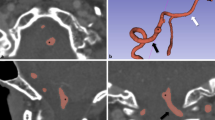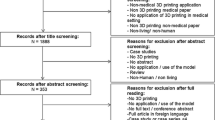Abstract
The role of 3-D printing is presented for improved patient-specific surgery planning. Key benefits are time saved and surgery outcome. Two hard-tissue surgery models were 3-D printed, for orthopedic, pelvic surgery, and craniofacial surgery. We discuss software data conversion in computed tomography (CT)/magnetic resonance (MR) medical image for 3-D printing. 3-D printed models save time in surgery planning and help visualize complex pre-operative anatomy. Time saved in surgery planning can be as much as two thirds. In addition to improved surgery accuracy, 3-D printing presents opportunity in materials research. Other hard-tissue and soft-tissue cases in maxillofacial, abdominal, thoracic, cardiac, orthodontics, and neurosurgery are considered. We recommend using 3-D printing as standard protocol for surgery planning and for teaching surgery practices. A quick turnaround time of a 3-D printed surgery model, in improved accuracy in surgery planning, is helpful for the surgery team. It is recommended that these costs be within 20 % of the total surgery budget.




Similar content being viewed by others
References
Weiser TG, Regenbogen SE, Thompson KD, Haynes AB, Lipsitz SR, Berry WR, Gawande AA (2008) An estimation of the global volume of surgery: a modeling strategy based on available data. Lancet 372:139–144
Akiba T, Inagaki T, Nakada T (2014) Three-dimensional printing model of anomalous bronchi before surgery. Ann Thorac Cardiovasc Surg 20 Suppl:659–662. doi:10.5761/atcs.cr.13-00189
Ionita CN, Mokin M, Varble N, Bednarek DR, Xiang J, Snyder KV, Siddiqui AH, Levy EI, Meng H, Rudin S (2014) Challenges and limitations of patient-specific vascular phantom fabrication using 3-D Polyjet printing. Proc SPIE Int Soc Opt Eng. doi:10.1117/12.2042266
Schmauss D, Haeberle S, Hagl C, Sodian R (2015) Three-dimensional printing in cardiac surgery and interventional cardiology: a single-centre experience. Eur J Cardiothorac Surg 47(6):1044–1052
Acknowledgments
The authors thank Nitte Education Trust (NET) for this effort. We thank 3-D Product Development Pvt Ltd, for 3-D printing surgery models, Tejaswini Hospital, for other patient-data, and Materialise BV, Malaysia, for discussions and for providing MIMICS Software on evaluation basis.
Conflict of Interest
The authors declare that they have no competing interests.
Author information
Authors and Affiliations
Corresponding author
Rights and permissions
About this article
Cite this article
Singhal, A.J., Shetty, V., Bhagavan, K.R. et al. Improved Surgery Planning Using 3-D Printing: a Case Study. Indian J Surg 78, 100–104 (2016). https://doi.org/10.1007/s12262-015-1326-4
Received:
Accepted:
Published:
Issue Date:
DOI: https://doi.org/10.1007/s12262-015-1326-4




